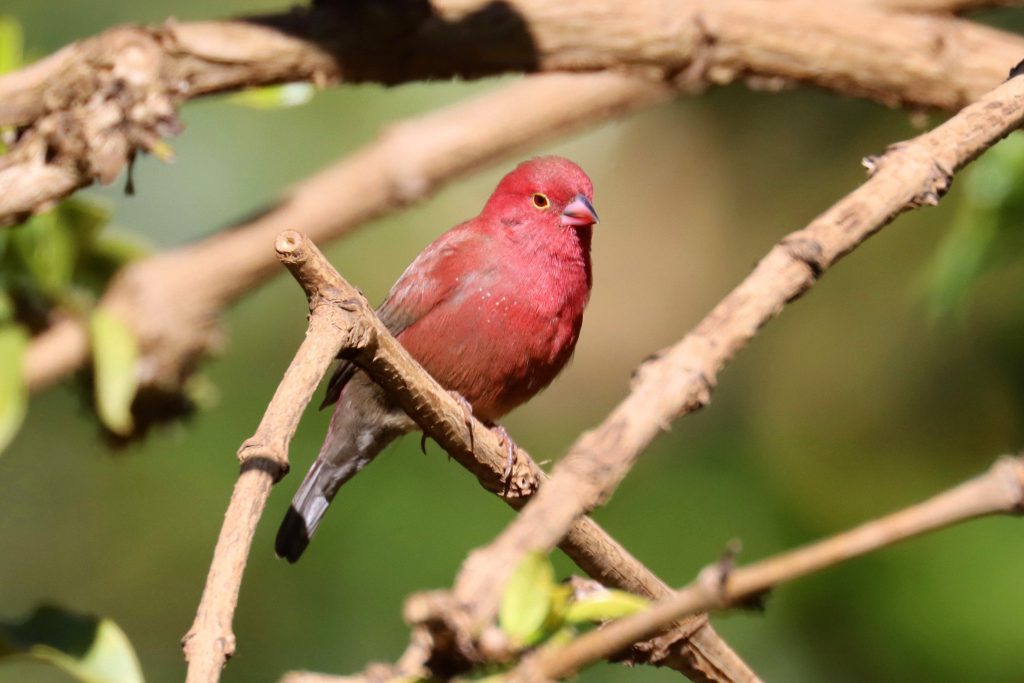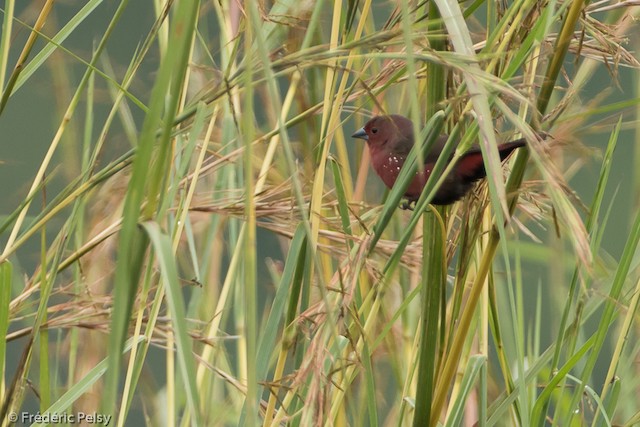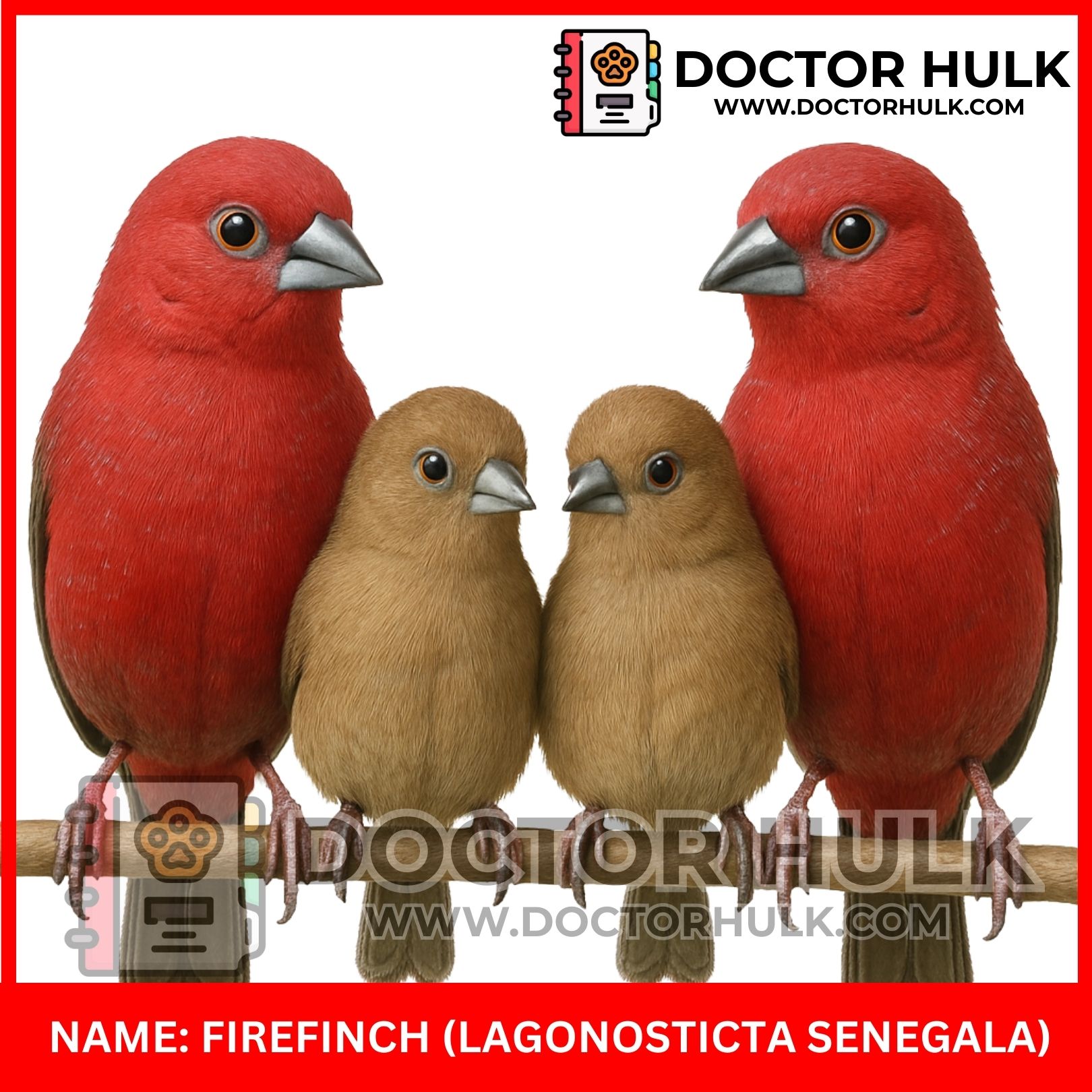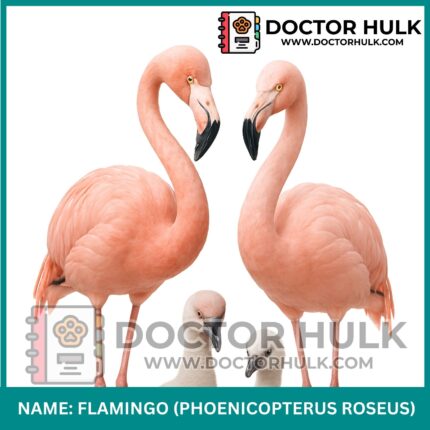The Firefinch is a small, colorful bird known for its bright red or rosy feathers, especially in males. These cheerful little birds are often seen hopping around in grasslands or near homes, especially in Africa. They are gentle, friendly, and easy to spot because of their vibrant color.
Scientific Classification
-
Kingdom: Animalia
-
Phylum: Chordata
-
Class: Aves
-
Order: Passeriformes
-
Family: Estrildidae
-
Genus: Lagonosticta
Firefinches are part of the estrildid finch family, also known as waxbills.
Common Names
-
Firefinch
-
African Firefinch
-
Red-billed Firefinch
-
In some local Nigerian languages: “Eyin pupa kekere” (small red bird)
These birds are often admired for their soft calls and peaceful nature.
Geographic Distribution
Firefinches are native to sub-Saharan Africa. They are found in:
-
Nigeria
-
Ghana
-
Kenya
-
Uganda
-
Sudan
-
And many other African countries
They live in savannas, farmlands, gardens, and bushy areas, often close to humans.
 Image showing a Male Red-billed Firefinch perched on a thin branch in a sunny bush (Source: Tanzania Birding)
Image showing a Male Red-billed Firefinch perched on a thin branch in a sunny bush (Source: Tanzania Birding)
Physical Characteristics
Firefinches are tiny, round-bodied birds with soft feathers and short beaks.
-
Size: About 10 cm (4 inches) long
-
Color:
-
Males are mostly bright red or rose-pink
-
Females are light brown with some red on the body
-
-
Beak: Small, thick, and conical (good for seed eating)
-
Eyes: Dark and shiny
They are often seen in pairs or small groups, feeding on the ground.
Types of Firefinches
1. Red-billed Firefinch (Lagonosticta senegala)
 Image showing a Male Red-billed Firefinch showing red feathers and dark tail (Source: Holmen Birding Safaris)
Image showing a Male Red-billed Firefinch showing red feathers and dark tail (Source: Holmen Birding Safaris)
Key Facts:
-
One of the most common types in West Africa
-
Males are bright red with a red beak
-
Females are brown with a hint of red
-
Often found around villages and farms
2. African Firefinch (Lagonosticta rubricata)

Key Facts:
-
Rich red body with white spots on the belly
-
Lives in forests, edges, and moist thickets
-
Shy and quieter than the Red-billed Firefinch
-
Eats seeds and small insects
What do Firefinches eat?
Firefinches are mainly seed eaters but will also eat small insects when available.
Their diet includes:
-
Grass seeds
-
Millet and grains
-
Small ants and termites
-
Sometimes soft fruits
They often feed on the ground and hop quickly while pecking for food.
Fun facts
-
Firefinches are often kept as pet birds because of their calm nature.
-
The male sings softly to attract a female during mating season.
-
They build small, round nests using grass and feathers.
-
Firefinches sometimes share nests with other birds, like whydahs.
-
Though small, they are tough and adaptable to different climates.
Importance to Humans
Positives:
-
Bring color and music to gardens and farms
-
Eat weed seeds and small insects, helping balance the ecosystem
-
Loved as cage birds or aviary pets
-
Symbolize peace, joy, and love in local traditions
Negatives:
-
Can be caught and sold illegally for pet trade
-
Sometimes confused with farm pests, though they do little harm
Health & common issues
Firefinches are delicate and need proper care when kept in cages or aviaries.
Common health concerns include the following:
-
Stress from poor housing or noise
-
Feather loss due to mites or lack of nutrients
-
Diarrhea from dirty water or bad seed
-
Injuries from sharp cage edges
Care Tips (for pet Firefinches):
-
Provide a clean, quiet, and roomy cage
-
Feed with fresh, clean seed mix and greens
-
Offer clean water daily
-
Keep cage in a well-lit but shaded area
Conservation Status
Firefinches are not endangered and are listed as Least Concern by the IUCN. However:
-
Habitat loss and pollution may reduce local numbers
-
Illegal bird trade affects their wild population in some regions
-
Efforts to protect natural grasslands and regulate bird trade help them thrive
Firefinch vs Canary
| Feature | Firefinch | Canary |
|---|---|---|
| Color | Mostly red or brown | Yellow or greenish |
| Size | Very small (4 in) | Slightly bigger (4.5–5 in) |
| Song | Soft and gentle | Loud and musical |
| Popularity | Common in Africa | Popular worldwide as pet |
Do you need advice on caring for small birds or reporting wild bird injuries? Visit Doctor Hulk Veterinary Hospital today or call 08143397614.













Reviews
There are no reviews yet.